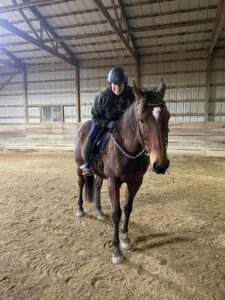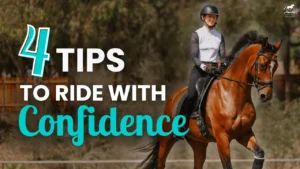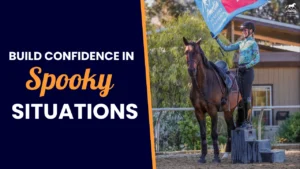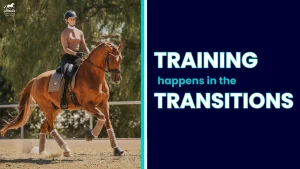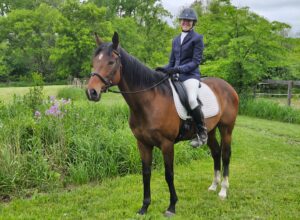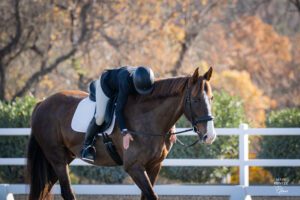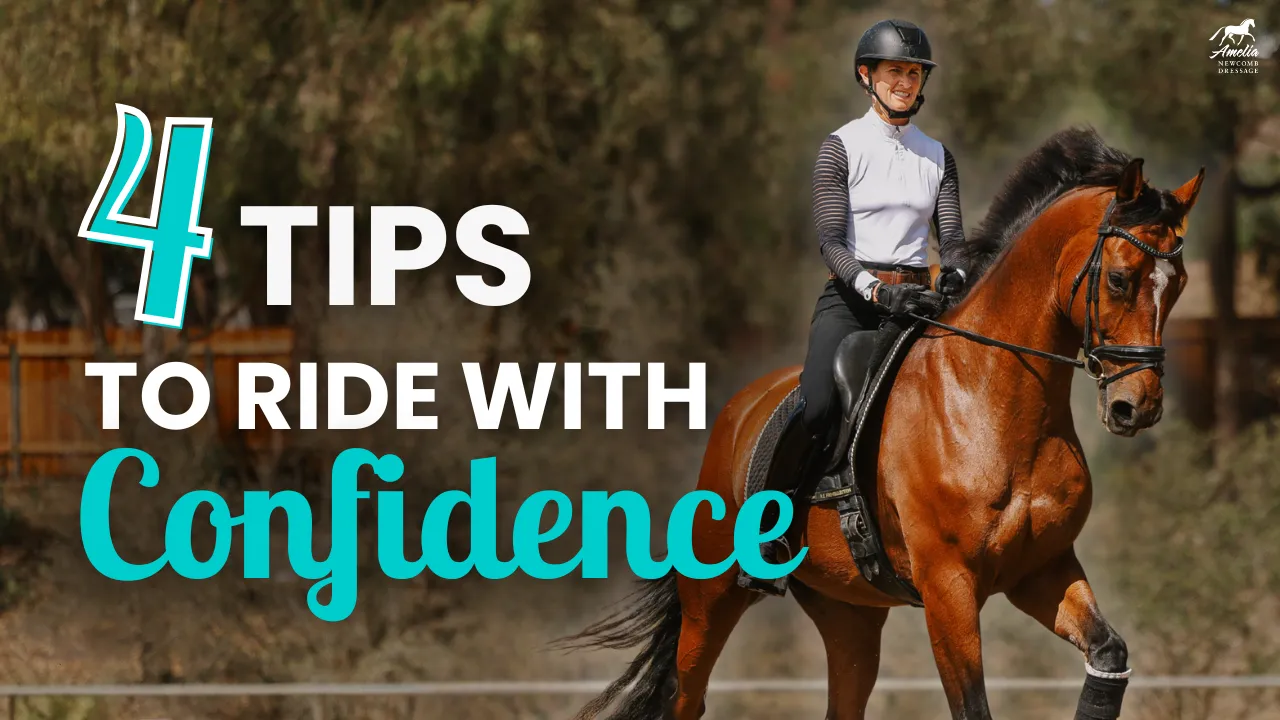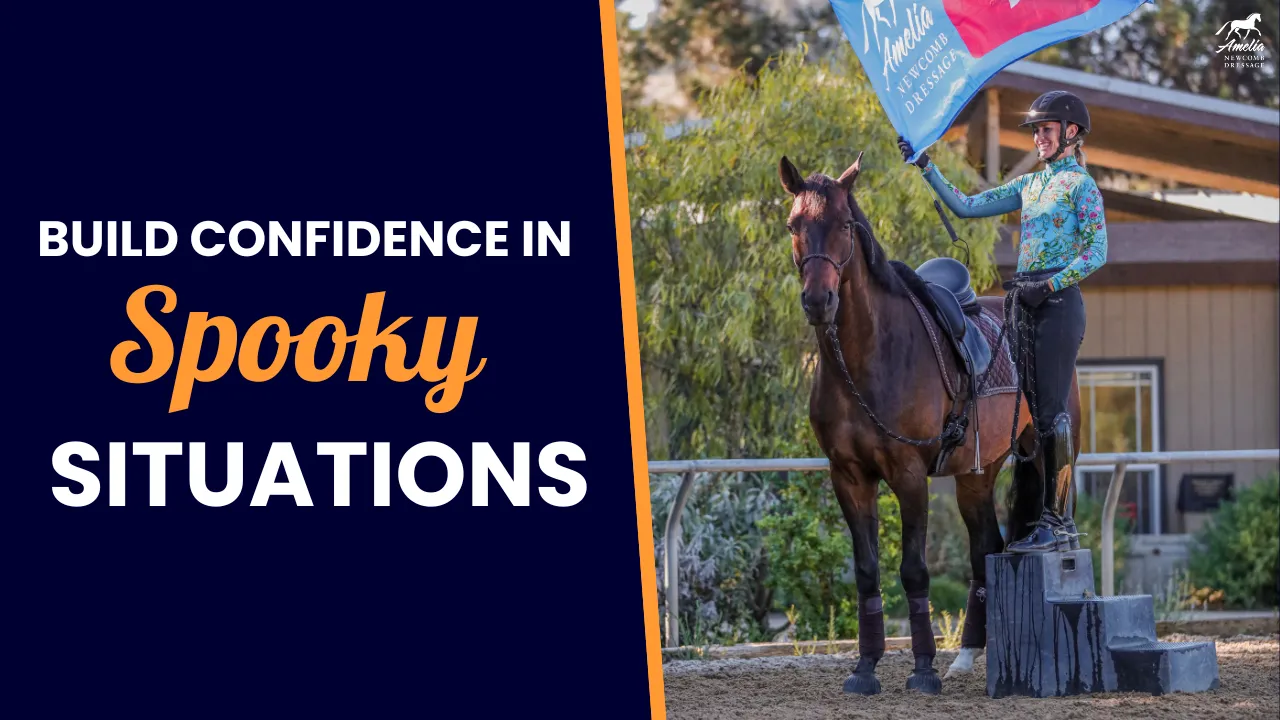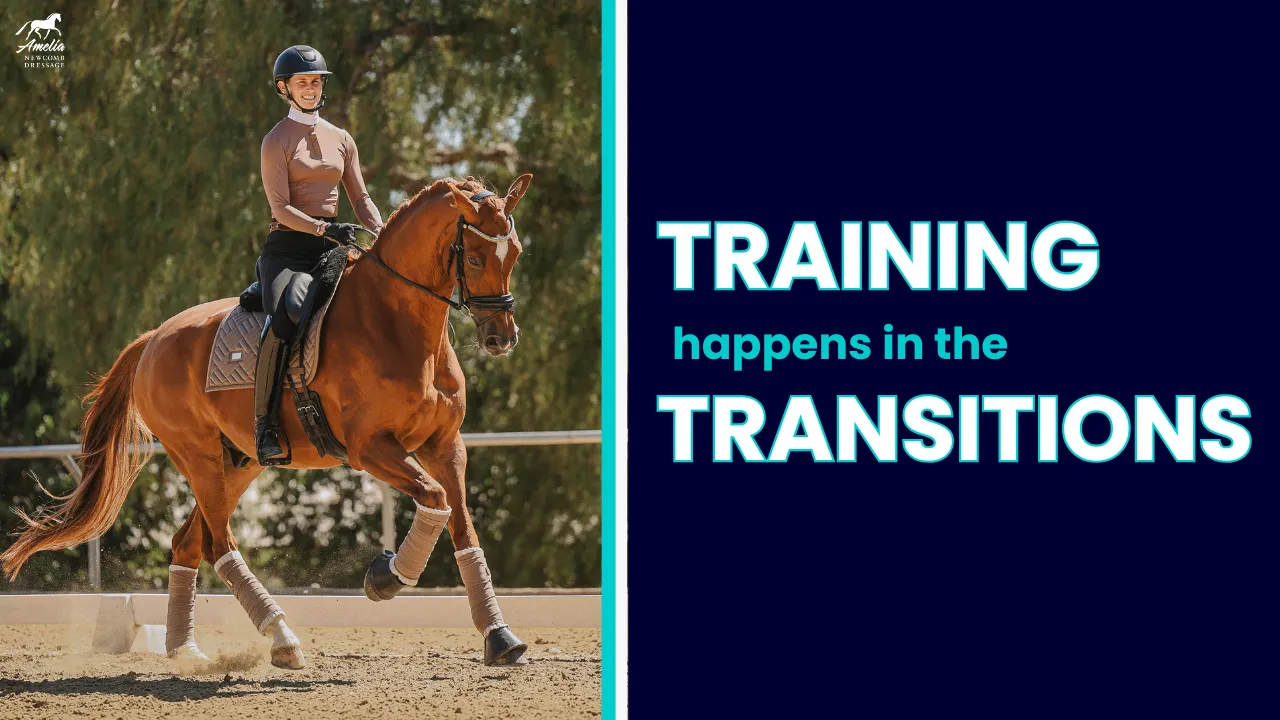Before we get into this week’s video, I just wanted to remind you that enrollment for my brand-new course, The 30 Day Rider Position Challenge*, will be closing soon! Your rider position is so important. Nearly every training issue can be traced down to a problem with rider position! In this course, we will be covering exactly what you should be doing with every part of your body, how you can make your aids more effective, and help your horse do their job easier. Enroll today and transform your position in just 30 days! I look forward to working with you inside this course! Also, if you missed the free Rider Position Webinar, click here to watch the replay.* But hurry, it’s only available to watch until the end of the week.
*Sorry! You’ve missed this course enrollment. Don’t worry thought! Click the link and put your name on the list to be notified the next time the course opens again. We would love to have you.
Are you bouncing in the saddle? For many riders, sitting trot and the canter
seat can be a challenge! It can be very tricky to figure out how to sit the motion especially since every gait is different and every horse moves a little differently!
We want to be able to sit the trot and canter well because not only is bouncing uncomfortable for us, it is also uncomfortable for our horses and bad for their back health. So, how do you sit the trot and follow the canter motion? Here’s the secret: illusion of stillness.
A good seat defines a good rider, and part of your seat’s function is to be able to absorb your horse’s motion. While it may seem like you need to be still, you actually need to move A LOT to follow your horse’s motion. When you sit the trot or canter, your belly, hips, and back will be moving to follow the motion of your horse. Your movement absorbs the motion of your horse and creates the illusion that you are sitting still!
A few tips for sitting the trot and canter:
- Make sure your horse is forward and round. Before you work on sitting the trot, you want your horse to be using their topline. I like to warm up all my horses at the posting trot before I sit the trot. In order to sit the canter, you want your horse to be using their topline in a round and forward canter as well. If you are having to nag your horse in either gait, your seat and hips will tighten and you will bounce in the saddle.
- Focus on quality not quantity. A good exercise to practice your sitting trot is to post ½ circle, then sit ½ or ¼ circle. Begin posting again as soon as you feel yourself start to bounce. You can also do this at the canter. Practice sitting a few strides of canter and then transition back to trot as soon as you need a break.
- For the canter, think of your horse’s back as a wave. There is an upbeat, level beat, and downbeat of the canter stride. Your hips will move with the horse in a swishing motion front to back in the saddle. If your motion stops, you will bounce!
When your seat is connected to your horse it gives both you and the horse confidence. It takes lots and lots of practice to be able to improve your seat and sit the motion of your horse well. Learning the unique motion of your horse and each gait is difficult, but try out these tips in your rides and I know you will improve! For more help with your seat and for support along the way, join my 30 Day Rider Position Challenge!*
Happy riding!
*Sorry! You’ve missed this course enrollment. Don’t worry thought! Click the link and put your name on the list to be notified the next time the course opens again. We would love to have you.
